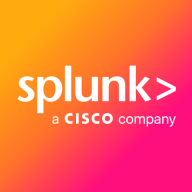

Splunk Enterprise Security and Microsoft Purview Audit are competitors in the security and compliance monitoring domain. Microsoft Purview Audit has an edge due to its features, although Splunk is preferred for its support and pricing.
Features: Splunk Enterprise Security includes advanced analytics with real-time threat detection and greater integration capabilities. Microsoft Purview Audit focuses on compliance monitoring and audit capabilities with robust data governance and comprehensive compliance tracking.
Ease of Deployment and Customer Service: Microsoft Purview Audit streamlines deployment with cloud integration and provides extensive ecosystem support. Splunk requires more customization but offers excellent, hands-on customer support and comprehensive post-deployment assistance.
Pricing and ROI: Splunk Enterprise Security might have higher initial setup costs but offers strong ROI with its security capabilities. Microsoft Purview Audit presents a cost-effective entry leveraging Microsoft subscriptions, integrating seamlessly for businesses already using its suite, and providing a quick investment upside.
| Product | Market Share (%) |
|---|---|
| Splunk Enterprise Security | 7.3% |
| Microsoft Purview Audit | 0.7% |
| Other | 92.0% |

| Company Size | Count |
|---|---|
| Small Business | 109 |
| Midsize Enterprise | 50 |
| Large Enterprise | 263 |
The unified auditing functionality in Microsoft 365 provides organizations with visibility into many types of audited activities across many different services in Microsoft 365. Advanced Audit helps organizations to conduct forensic and compliance investigations by increasing audit log retention required to conduct an investigation, providing access to crucial events that help determine scope of compromise, and faster access to Office 365 Management Activity API.
Splunk Enterprise Security delivers powerful log management, rapid searches, and intuitive dashboards, enhancing real-time analytics and security measures. Its advanced machine learning and wide system compatibility streamline threat detection and incident response across diverse IT environments.
Splunk Enterprise Security stands out in security operations with robust features like comprehensive threat intelligence and seamless data integration. Its real-time analytics and customizable queries enable proactive threat analysis and efficient incident response. Integration with multiple third-party feeds allows detailed threat correlation and streamlined data visualization. Users find the intuitive UI and broad compatibility support efficient threat detection while reducing false positives. Despite its strengths, areas such as visualization capabilities and integration processes with cloud environments need enhancement. Users face a high learning curve, and improvements in automation, AI, documentation, and training are desired to maximize its potential.
What Are the Key Features of Splunk Enterprise Security?In specific industries like finance and healthcare, Splunk Enterprise Security is instrumental for log aggregation, SIEM functionalities, and compliance monitoring. Companies leverage its capabilities for proactive threat analysis and response, ensuring comprehensive security monitoring and integration with various tools for heightened operational intelligence.
We monitor all Log Management reviews to prevent fraudulent reviews and keep review quality high. We do not post reviews by company employees or direct competitors. We validate each review for authenticity via cross-reference with LinkedIn, and personal follow-up with the reviewer when necessary.